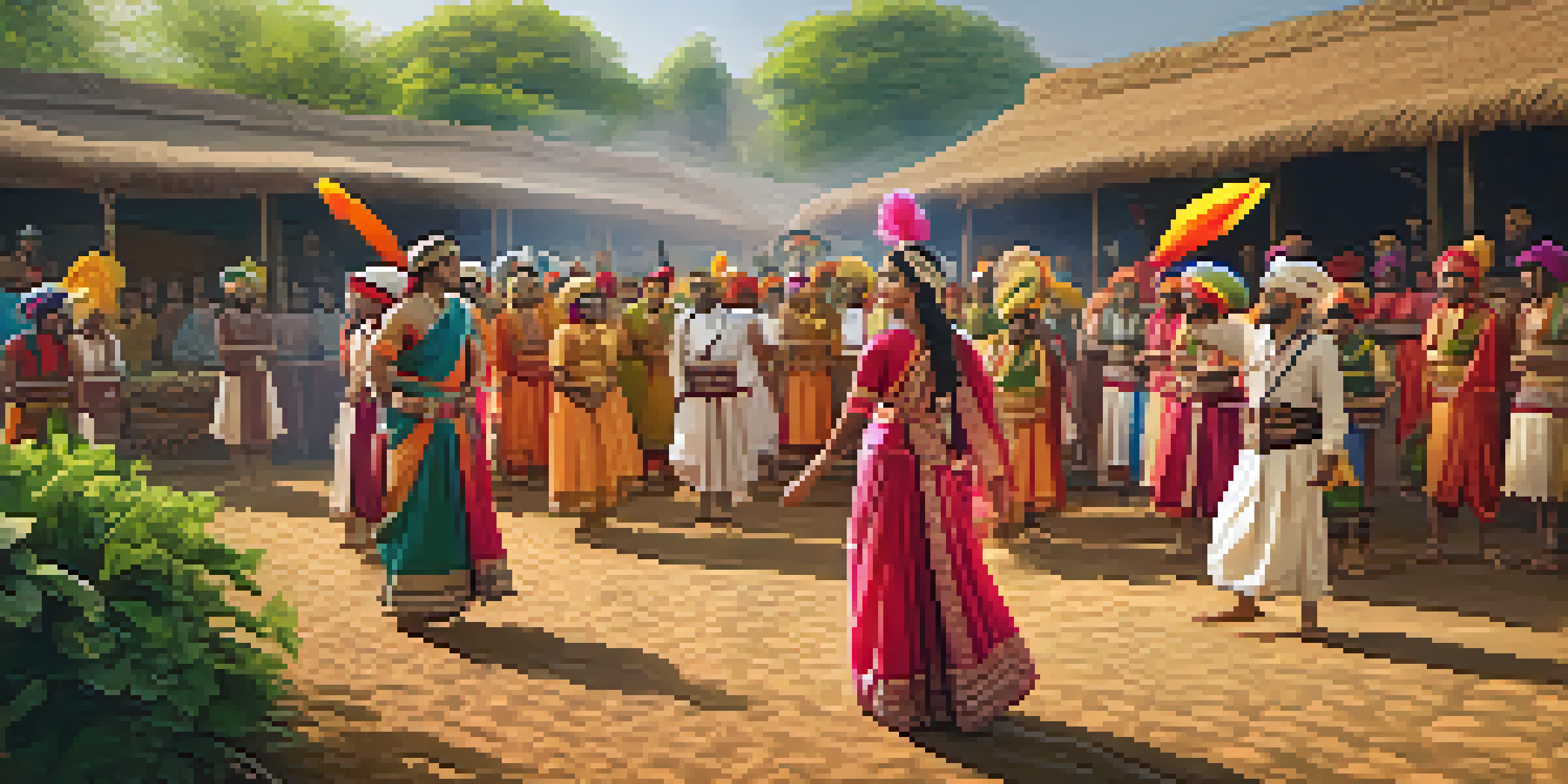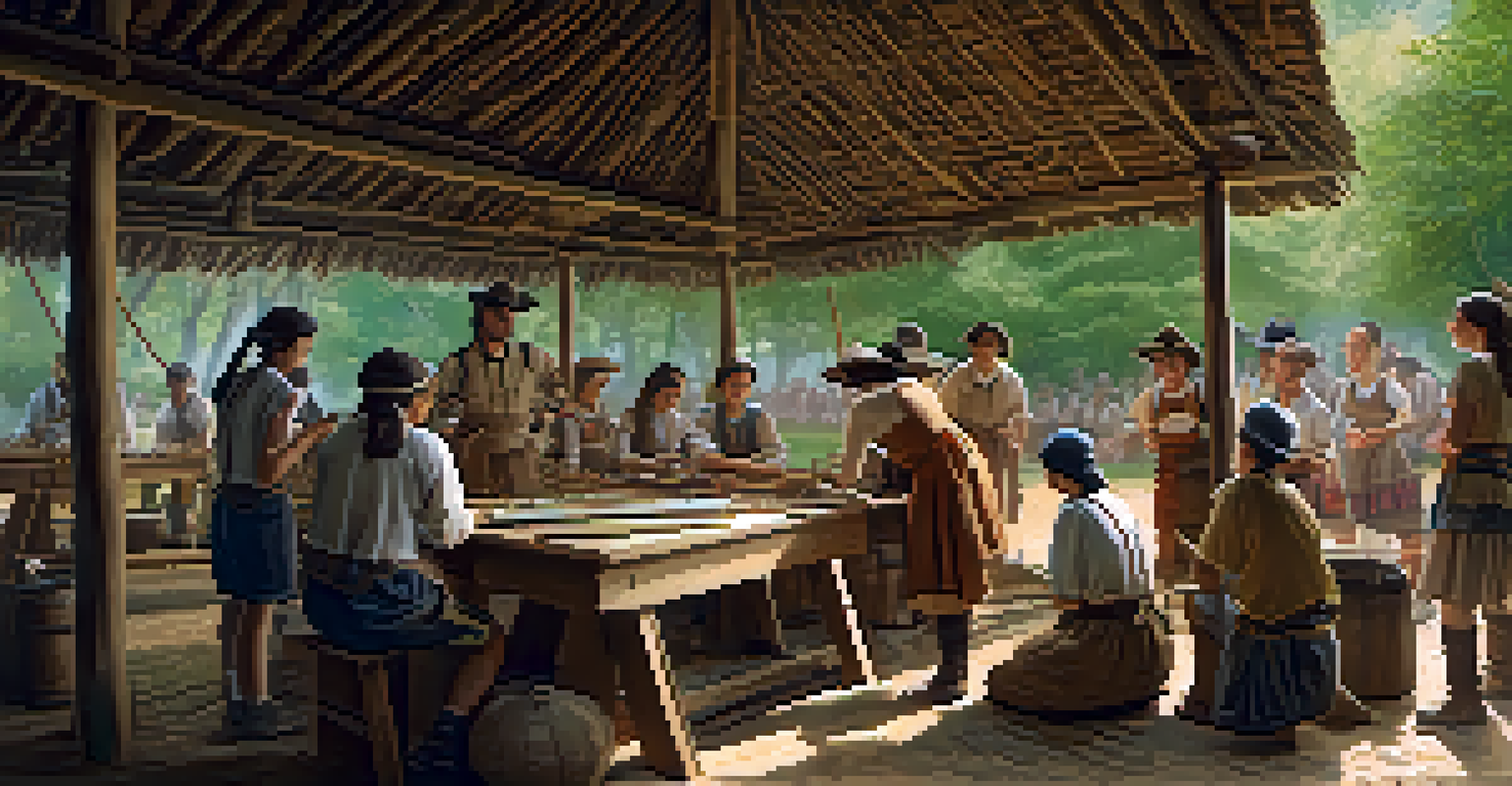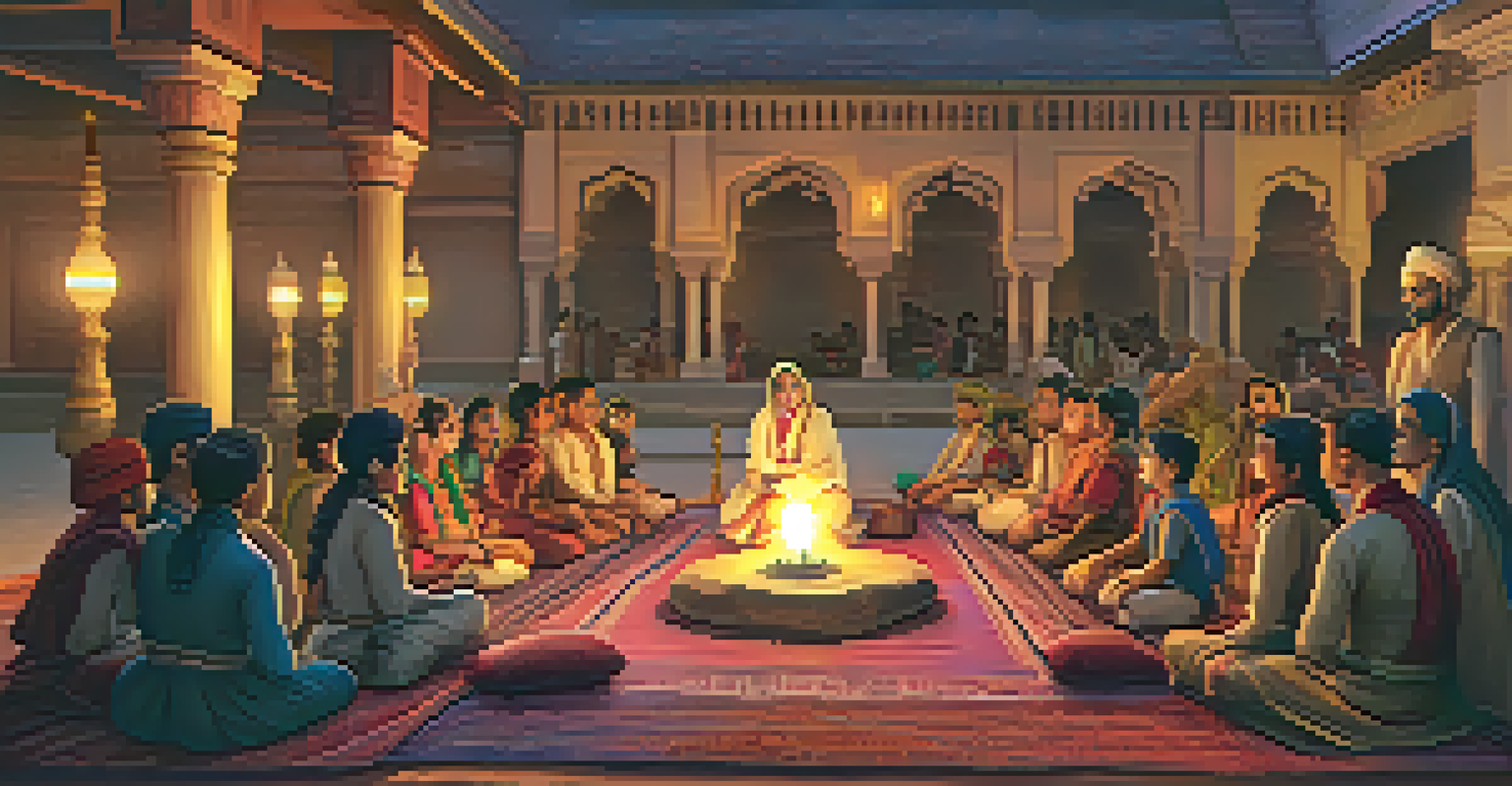Reviving Ancient Indian Traditions via Historical Reenactments

Understanding Historical Reenactments in India
Historical reenactments are more than just performances; they are immersive experiences that transport participants and audiences back in time. In India, these reenactments often focus on significant events, cultural practices, and traditional lifestyles from ancient history. By recreating these moments, reenactors aim to foster a deeper appreciation for India’s rich heritage.
History is not a burden on the memory but an illumination of the soul.
These events typically involve meticulous research and preparation, ensuring that costumes, dialogue, and settings are as authentic as possible. This dedication not only enhances the visual experience but also educates attendees about the historical context and significance of the traditions being portrayed. As a result, these reenactments serve as living museums, where history is not just read but experienced.
Furthermore, the interactive nature of historical reenactments encourages community involvement and fosters a sense of belonging. Participants often take pride in representing their culture, sharing stories, and rekindling lost traditions, all while connecting with others who share their passion for history.
Benefits of Reviving Ancient Traditions
Reviving ancient traditions through reenactments offers numerous benefits, both culturally and socially. For one, it helps to preserve vital aspects of Indian heritage that may otherwise fade into obscurity. By showcasing traditional crafts, performances, and rituals, these events ensure that future generations understand and appreciate their roots.

Additionally, historical reenactments can promote tourism and local economies. As more people become interested in experiencing these events firsthand, communities can benefit from increased foot traffic, leading to opportunities for local artisans and businesses. This not only sustains the cultural fabric but also provides a livelihood for those involved.
Cultural Preservation through Reenactments
Historical reenactments play a vital role in preserving India's cultural heritage by showcasing traditional crafts, performances, and rituals for future generations.
Moreover, these reenactments often spark conversations about the relevance of ancient traditions in modern society. They encourage people to reflect on their cultural identity and consider how these age-old practices can be adapted or integrated into contemporary life.
Incorporating Technology in Reenactments
The use of technology in historical reenactments has transformed how these events are experienced. From virtual reality to augmented reality applications, tech innovations allow audiences to engage with history in exciting new ways. For instance, attendees might use their smartphones to view additional content or interact with the reenactment in real-time.
Tradition is not the worship of ashes, but the preservation of fire.
Moreover, social media platforms play a crucial role in promoting these events, reaching wider audiences than ever before. Organizers can share behind-the-scenes footage, interviews with participants, and educational content to build excitement leading up to the reenactments. This not only boosts attendance but also creates an online community passionate about preserving traditions.
However, it’s essential to strike a balance between technology and authenticity. While tech can enhance the experience, the heart of historical reenactments lies in the genuine portrayal of traditions, ensuring that the essence of culture is maintained.
The Role of Education in Historical Reenactments
Education is a central pillar of historical reenactments, as they often serve as educational platforms for both participants and audiences. Schools and educational institutions frequently collaborate with reenactors to provide students with firsthand experiences of history, making learning more engaging and impactful. This experiential learning approach helps students retain information better than traditional methods.
Additionally, many reenactments include workshops and interactive sessions where participants can learn traditional skills, such as dance, music, or crafts. By engaging in these activities, individuals not only gain knowledge but also develop a deeper appreciation for the cultural significance behind them. This hands-on experience can inspire a new generation of artisans and historians.
Community Engagement Drives Success
Successful historical reenactments thrive on community involvement, fostering a shared sense of pride and encouraging participants to connect through storytelling.
Through educational initiatives, reenactments can also address historical inaccuracies or misconceptions, fostering a more nuanced understanding of the past. By providing context and encouraging critical thinking, these events help participants and audiences appreciate the complexities of history.
Community Engagement and Participation
Community engagement is a driving force behind successful historical reenactments. These events often rely on local volunteers, who contribute their time and skills to bring history to life. This not only strengthens community bonds but also fosters a shared sense of pride in their heritage, as individuals work together towards a common goal.
Moreover, reenactments often serve as platforms for storytelling, where individuals can share their unique family histories or cultural experiences. This personal connection adds depth to the event, as audiences hear stories that resonate on a personal level. It’s a beautiful reminder that history is not just about dates and events but the lives lived and stories shared.
Involving local schools, cultural organizations, and artisans can further enhance community participation. By promoting collaboration across various groups, reenactments can showcase a diverse range of traditions, ensuring that all voices are heard and represented.
Challenges of Historical Reenactments
Despite their many benefits, historical reenactments face several challenges that can impact their effectiveness. One significant concern is the risk of cultural appropriation, where individuals or groups may misrepresent or exploit traditions that do not belong to them. This can lead to tensions and misunderstandings within communities, emphasizing the importance of sensitivity and respect.
Additionally, the logistical aspects of organizing these events can be daunting. From securing permits to coordinating schedules and managing budgets, the planning process can be time-consuming and complex. Organizers must be well-prepared to navigate these challenges while ensuring a high-quality experience for participants and audiences.
Technology Enhances Historical Experiences
Integrating technology like virtual reality and social media into reenactments transforms the audience experience while maintaining the authenticity of cultural traditions.
Finally, capturing the interest of modern audiences can be difficult, especially in a world filled with competing entertainment options. Reenactors must find innovative ways to engage viewers and demonstrate the relevance of ancient traditions in today’s fast-paced society.
The Future of Historical Reenactments
Looking ahead, the future of historical reenactments in India appears promising, with increasing interest in cultural heritage and community involvement. As more people recognize the importance of preserving traditions, we can anticipate a growth in diverse reenactments that highlight various aspects of Indian history. This evolution can foster a richer understanding of the multifaceted nature of the nation’s heritage.
Moreover, as technology continues to advance, reenactors will likely explore new ways to enhance the audience experience. From interactive storytelling to immersive environments, the possibilities for engaging presentations seem endless. This integration of modern tools with traditional practices can create unique experiences that captivate audiences of all ages.

Ultimately, the revival of ancient traditions through historical reenactments not only preserves the past but also paves the way for a vibrant cultural future. As communities come together to celebrate their heritage, they contribute to a collective narrative that honors history while embracing contemporary relevance.